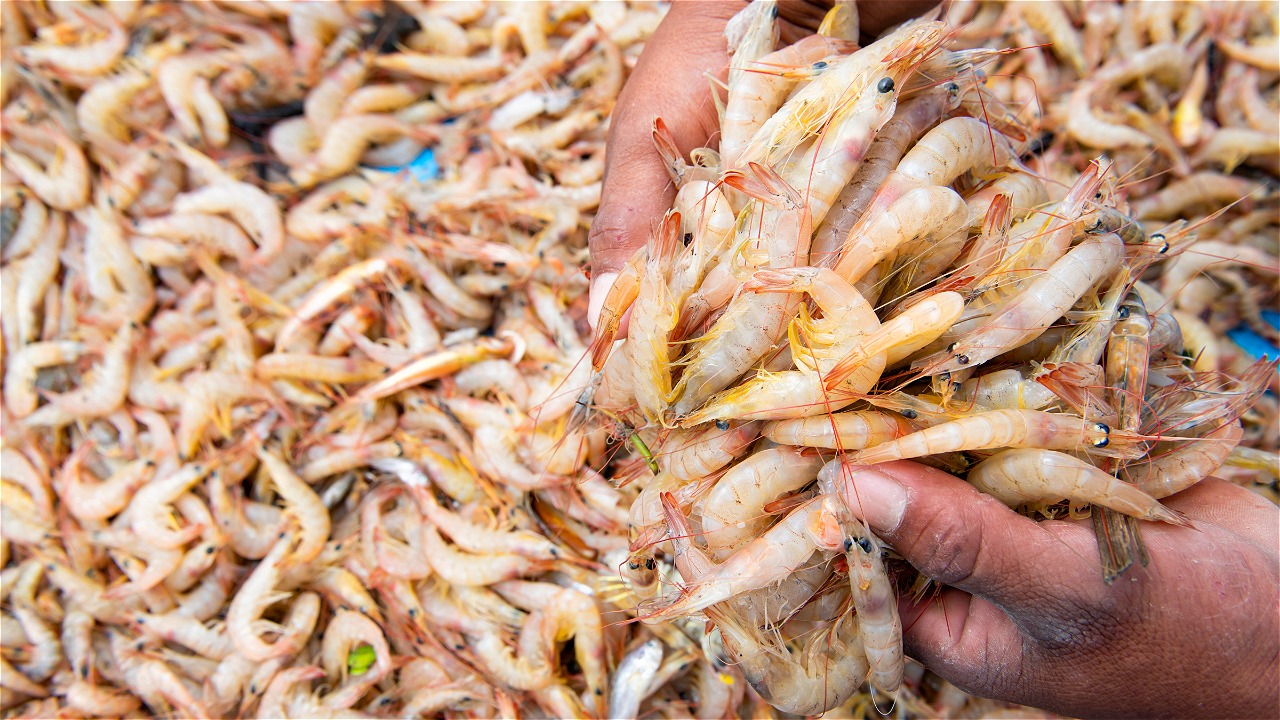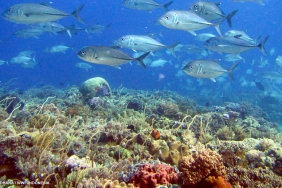THE STORY BEHIND THE ROLE OF COLLECTORS IN THE SHRIMP TRADE CHAIN IN NORTHERN KALIMANTAN
By: Andi Putra Luwu (Local facilitator of AIP Windu Shrimp Aquaculture) and M. Budi Santosa (Responsible Fisheries and Marine Conservation Senior Officer, WWF-Indonesia)
There is an interesting story behind the shrimp trade chain pattern in North Kalimantan (Kaltara). This chain pattern is carried out by five components of shrimp collectors in Kaltara, namely workers or pond guards, wives of workers or pond guards, pond farmers, posts or juragan, and factories.
The pattern of relationships among the five has a unique relationship and can be seen from the smallest scope to the largest scope. The pattern begins with the relationship between workers or pond guards and pond farmers. Pond guards who occupy the lowest position have to do the hardest work among other shrimp collectors.
Those who work for the farmers have to work on ponds with little access to resources. There is no electricity, no entertainment and sometimes no cell phone signal. They have to spend their days in silence and solitude in order to hand over the fruits of their labor to the farmers. These workers are usually people who come from Sulawesi and NTT who have long settled in Tarakan City.
After establishing a relationship with the pond keeper, the farmer must sell the harvest to a pos or middleman who serves as a collection point for the farmer's shrimp before it enters the factory. There are two categories of posts, namely small posts and large posts. Small posts are usually managed by people or farmers who have large capital and are good at trading. And large posts are usually managed by medium and large entrepreneurs. The owners of these large posts are usually referred to as "bosses". There is also a pattern of relationships between small posts and large posts before delivering shrimp from pond farmers to factories.
The Glorified Role of the Big Post
The big post is also referred to as the middleman. It turns out that large posts are the main actors in the shrimp trade chain in Kaltara. They have the most access to and influence over decision-making, whether it's with farm owners, small outposts, or even shrimp processing companies.
The system of purchasing shrimp with additional commissions and limited sources of raw materials make the position of large posts exalted in determining shrimp trading operations in Kaltara. Because Pos Besar is always there when farmers need fresh funds for pond activities. However, as long as they have a "debt" to the big post then that's how long they have to sell their shrimp harvest at a predetermined price.
The pattern of the chain of relationships in the shrimp trade in Kaltara was obtained from the results of a study conducted by WWF-Indonesia together with consultants from the Institute for the Assessment and Development of Development Resources (LPPSP) Semarang led by DR Indra Kertati MSi. The research on the condition of gender relations and the low awareness of actors in the shrimp trade chain in North Kalimantan was conducted in January - March 2016.
This research is inseparable from the activities of the Aquaculture Improvement Program conducted by WWF-Indonesia to assist farmers in North Kalimantan in producing tiger shrimp that can be accepted by national and international markets. Given the increasing market demand for ecolabel certified products, tiger shrimp farmers in North Kalimantan need to provide ecolabel certificates for shrimp products, namely the Aquaculture Stewardship Council (ASC) - Shrimp. certificate.
The North Kalimantan Provincial Government highly appreciates the activities carried out by WWF-Indonesia in helping to improve the welfare of shrimp farmers in their region. It is hoped that the research results can be utilized by relevant stakeholders in making improvements in the future.





